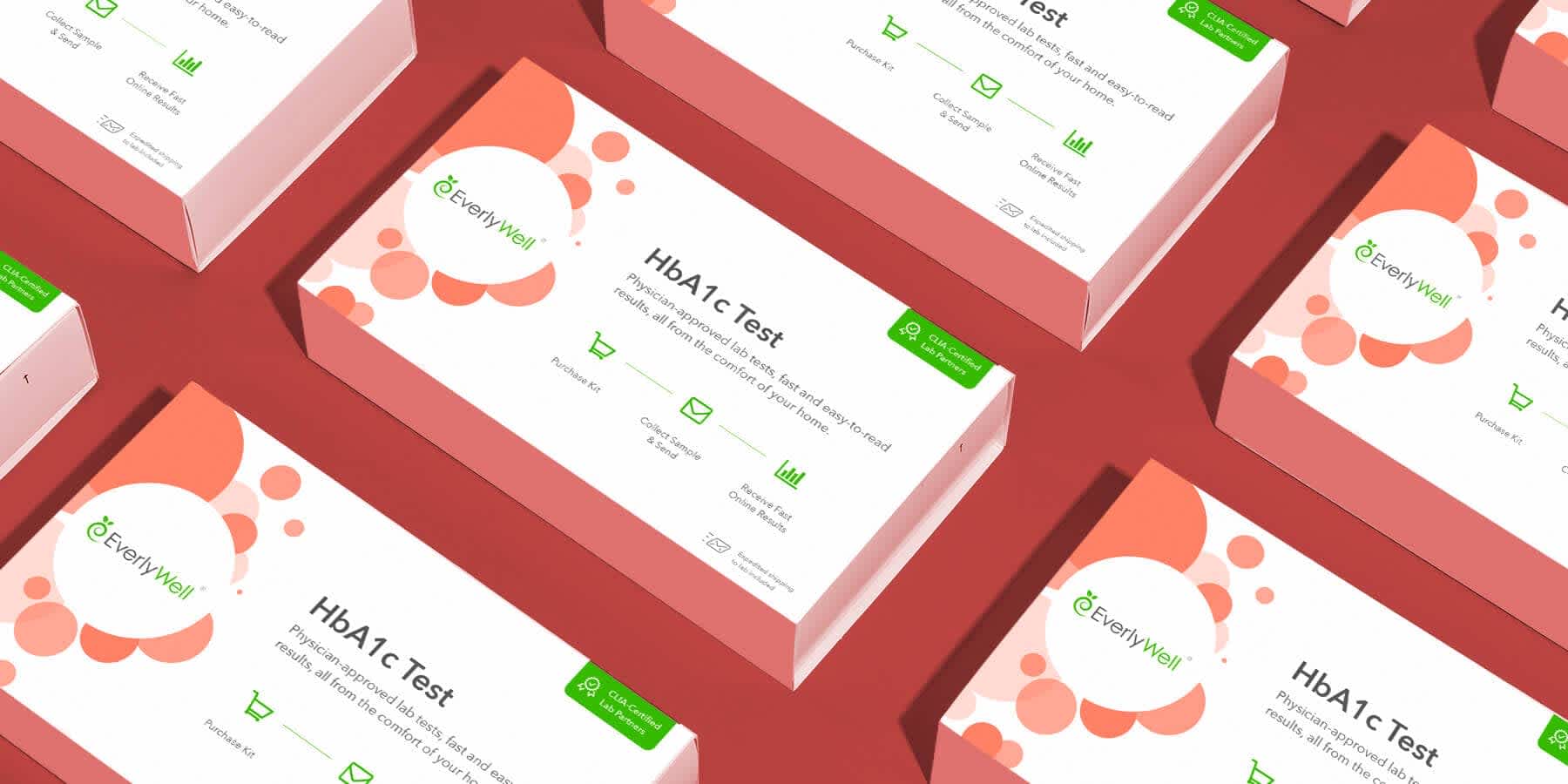
How to test for diabetes
Medically reviewed by Neka Miller, PhD on March 25, 2021. To give you technically accurate, evidence-based information, content published on the Everlywell blog is reviewed by credentialed professionals with expertise in medical and bioscience fields.
Much in the same way that you would monitor your blood pressure, it’s important to keep your blood sugar levels in check. However, your glucose level may be elevated if you have diabetes mellitus—a group of diseases that interfere with how your body uses blood sugar, or glucose.
If you’re concerned about your blood glucose levels, you may be wondering how to test for diabetes. Read on to learn more about the diabetes testing process. (You can easily check your HbA1c, a key indicator of blood sugar levels over the past three months, with the at-home HbA1c Test.)
What are the different types of diabetes?
Before diving into a discussion of how to test for diabetes by measuring HbA1c levels, it’s important to understand the different types of diabetes.
- Prediabetes: This condition means that your blood glucose level is higher than normal without being type 2 diabetes yet.
- Type 1 diabetes: Type 1 diabetes causes your body to produce very little or no insulin. As a result, you need to take daily insulin injections to control your blood glucose levels.
- Type 2 diabetes: With type 2 diabetes, your body produces insulin but doesn’t properly use it.
- Gestational diabetes: This type of diabetes is high blood sugar that occurs during pregnancy. It typically goes away after giving birth.
All these conditions can cause your body to have too much sugar in your blood. As a result, having prediabetes or diabetes can increase your risk of developing other health issues. The most common examples include heart disease and kidney disease.
How can I check if I have diabetes?
You may want to get tested for diabetes if you have risk factors, such as a family history of diabetes, or you have common diabetes symptoms.
- Increased thirst and frequent urination
- Extreme hunger
- Unexplained weight loss
- Fatigue
- Irritability
- Blurry vision
- Slow healing and frequent infections
You have many options for getting tested for diabetes, and some diabetes testing options are even available as at-home test kits.
How do healthcare providers test for diabetes?
When you ask your healthcare provider how to test for diabetes, he or she may order a test called a glycated hemoglobin test, also known as an A1c test, A1c blood test, or HbA1c test.
This A1c test doesn’t require fasting, and it can provide information about your average blood glucose level over the past 60 to 90 days. It calculates your average blood sugar level by measuring the percentage of blood sugar attached to hemoglobin, a certain protein in the red blood cells. A higher A1c level suggests a diabetes diagnosis.
Related: What is HbA1c?
If you have inconsistent results on your A1c test or this type of diabetes screening isn’t an option for you, your healthcare provider may order one of the following tests for diabetes.
- Fasting blood sugar test: This test requires you to fast overnight and then visit your healthcare provider’s office to provide a blood sample.
- Oral glucose tolerance test: This test also requires you to fast overnight before you will drink a sugary drink at your healthcare provider’s office. Then, the team there will measure your blood, or plasma, glucose levels over the next two hours.
- Random plasma glucose test: You don’t have to fast to prepare for this diabetes test. Instead, your healthcare provider’s office will take a blood sample at a random time.
Additionally, your healthcare provider may order a urine test for diagnosing diabetes. This urine test will look for the presence of ketones. This substance suggests that your body is breaking down muscle and fat tissue for energy because it doesn’t have enough insulin to use glucose. Your healthcare provider may also order autoantibody testing to look for destructive immune cells.
How do healthcare providers test for gestational diabetes?
You may be wondering how to test for diabetes during pregnancy. healthcare providers often order a different blood glucose test for diabetes screening. Your healthcare provider will likely order an initial glucose challenge test. You’ll start by drinking a sugary solution and then you’ll have a blood test an hour later.
If your testing suggests you have a higher risk of gestational diabetes, your healthcare provider will order follow-up oral glucose tolerance testing. For this test, you’ll fast overnight and then drink another syrupy drink. You’ll then undergo blood sugar testing every hour for three hours.
Check your HbA1c, an indicator of your blood sugar levels over the past three months, from the convenience of home with the at-home HbA1c Test.
References
1. What is diabetes. International Diabetes Federation. URL. Accessed March 25, 2021.
2. Prediabetes. Mayo Clinic. URL. Accessed March 25, 2021.
3. Title. Mayo Clinic. URL. Accessed March 25, 2021.